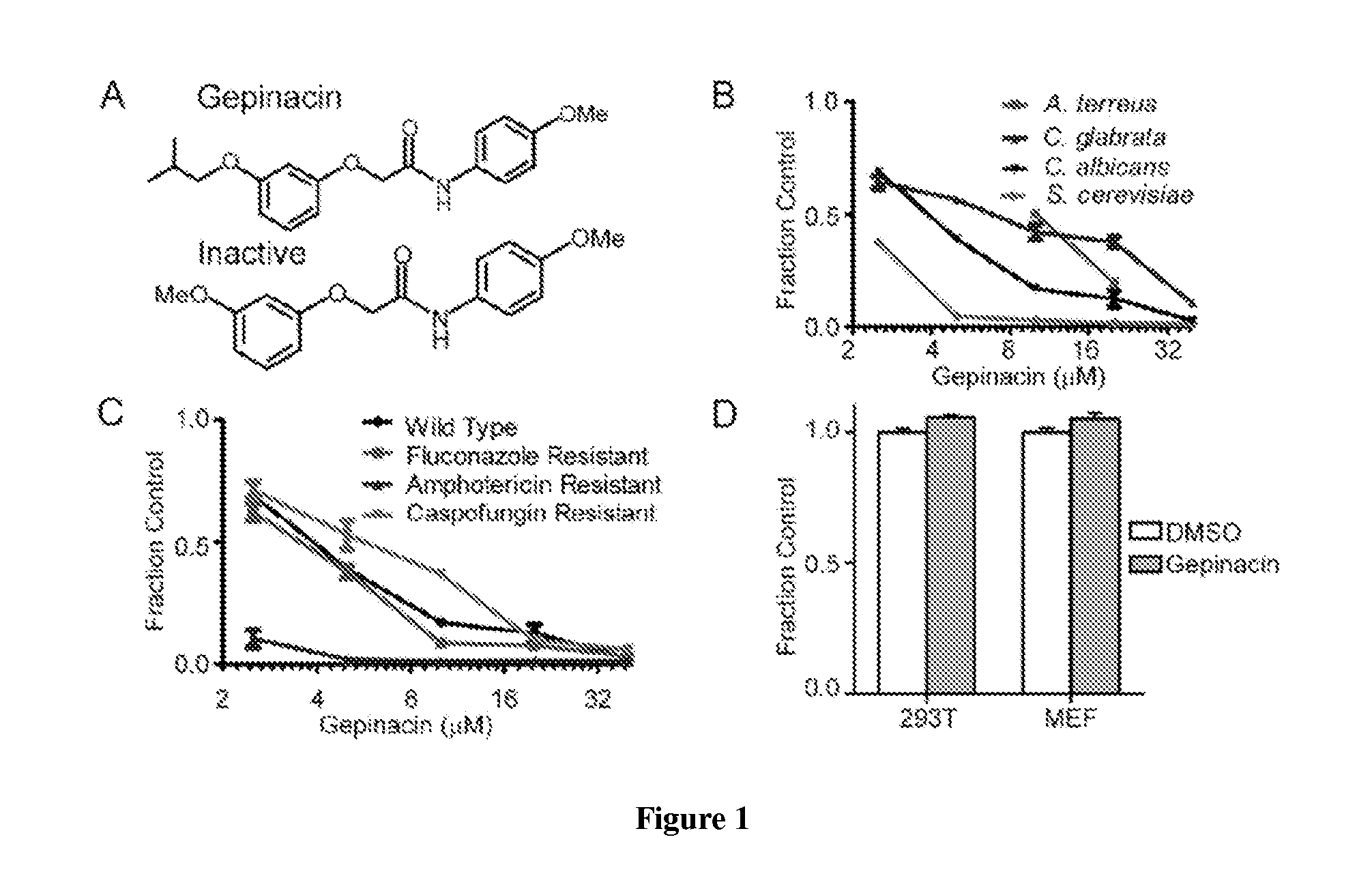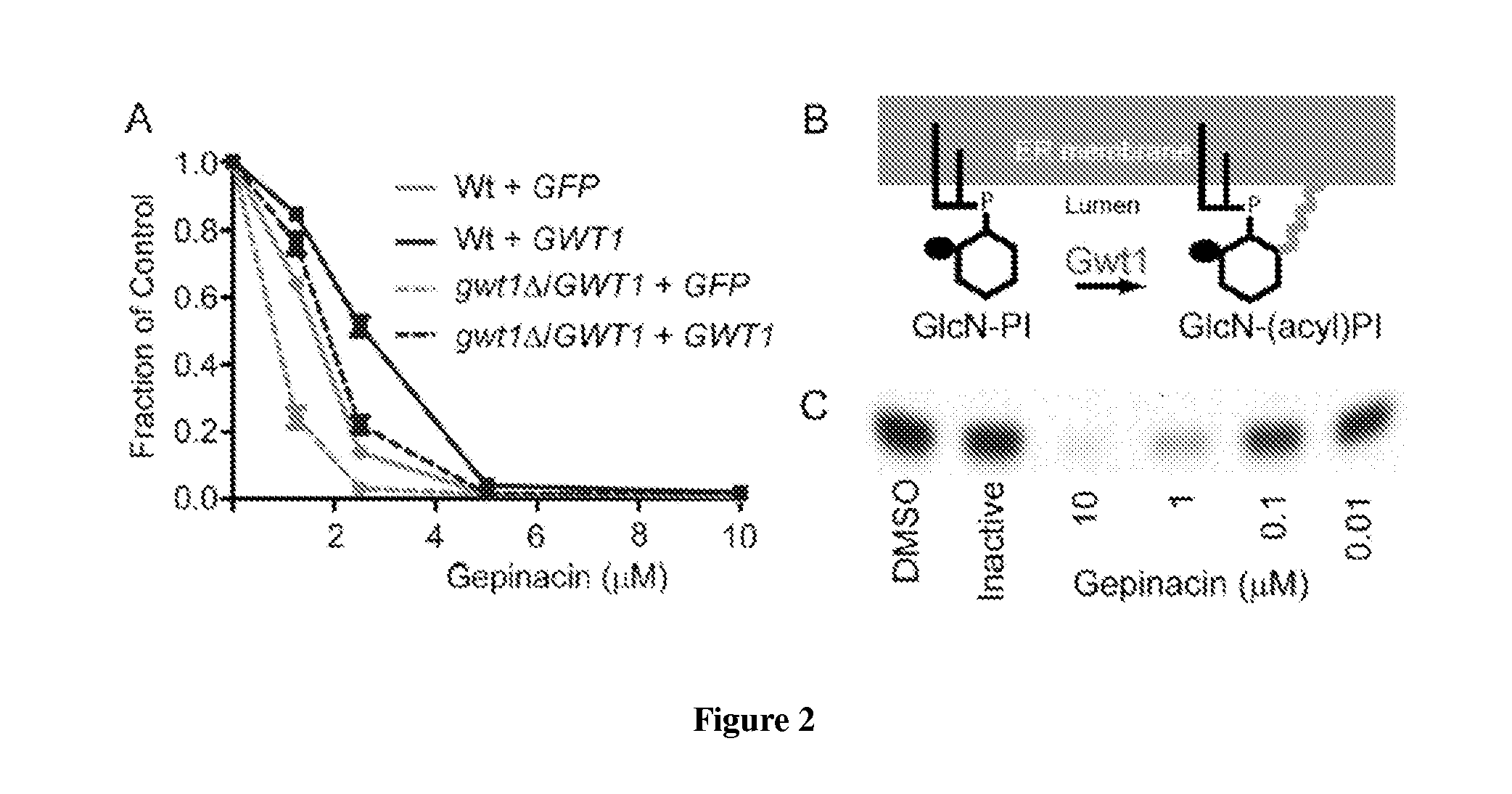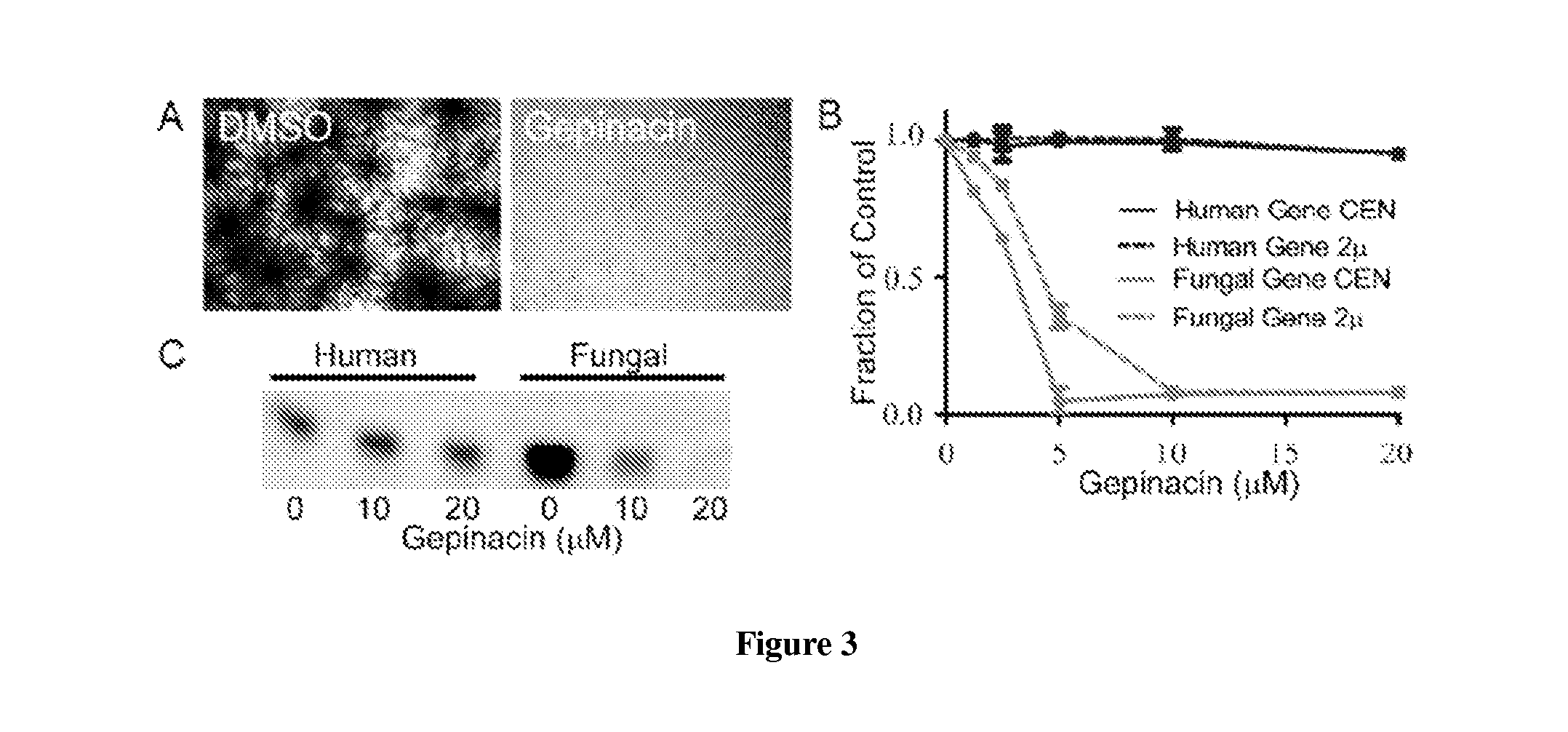Compounds for treating infectious diseases
a technology for infectious diseases and compounds, applied in the field of compounds for treating infectious diseases, can solve the problems of extremely difficult to eradicate in immunocompromised hosts, limited number of unique exploitable drug targets identified in fungi, and high cost of treatment, so as to reduce or avoid symptoms or causes of the condition, delay or minimize one or more symptoms, effect of improving the overall therapy
- Summary
- Abstract
- Description
- Claims
- Application Information
AI Technical Summary
Benefits of technology
Problems solved by technology
Method used
Image
Examples
examples
[0329]In order that the invention described herein may be more fully understood, the following examples are set forth. It should be understood that these examples are for illustrative purposes only and are not to be construed as limiting this invention in any manner.
[0330]In the course of high-throughput screening, the present inventors encountered a compound, gepinacin, that possessed anti-fungal activity against a surprisingly diverse range of fungi. Under screening conditions, the compound induced swelling of the yeast, Saccharomyces cerevisiae, which caused it to score in a cell growth assay. Closer examination revealed that gepinacin was actually toxic to yeast. In contrast, no growth inhibition was seen when gepinacin was incubated with mammalian cells in culture. The model fungal organism S. cerevisiae was used to identify the target of gepinacin and to understand the basis of its selective toxicity to fungi. Following target validation, gepinacin was used as a chemical probe...
PUM
 Login to View More
Login to View More Abstract
Description
Claims
Application Information
 Login to View More
Login to View More - R&D
- Intellectual Property
- Life Sciences
- Materials
- Tech Scout
- Unparalleled Data Quality
- Higher Quality Content
- 60% Fewer Hallucinations
Browse by: Latest US Patents, China's latest patents, Technical Efficacy Thesaurus, Application Domain, Technology Topic, Popular Technical Reports.
© 2025 PatSnap. All rights reserved.Legal|Privacy policy|Modern Slavery Act Transparency Statement|Sitemap|About US| Contact US: help@patsnap.com



